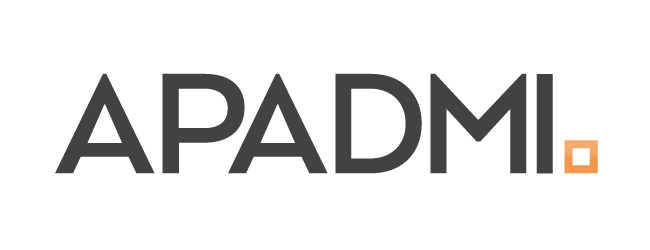
- The Zühlke UK team has recently become even more intentionally focused on making their hiring process more inclusive so that applicants from all kinds of backgrounds feel they can belong here.
- As part of this, the entire talent pipeline has been reassessed to ensure every step takes into account the reality of people’s differences and encourages equity.
- The first phase of the inclusive hiring approach has already delivered tangible results and is now being expanded upon further to include considerations for a range of underrepresented groups.
Hiring practices are often at the heart of discussions around Diversity and Inclusion (D&I) initiatives, and for good reason. Making sure different groups are well-represented within an organisation starts with attracting a broad range of candidates and then making sure their experiences throughout the initial engagements are positive. We place a significant focus on Inclusive Hiring, and we spoke to two of the people deeply involved in the process to get a better understanding of the impact this has on the business and company culture. Here’s what Rachael Parrott (Talent Acquisition Lead in the UK) and Davide Aldrovandi (Head of Digital Experience and Hiring Manager in the UK) had to say.
Hiring with Purpose
When asked to define the concept of inclusive hiring, Davide starts by explaining it in very simple terms. He says:
“At its heart, it’s about giving everyone a fair shot and being curious about the people we want to bring into the company.”
That’s something Rachael builds on with her definition.
“It entails attracting a mix of individuals to the business, and not discounting or putting anyone off because of the hiring process,” she explains. She also references our global D&I policy, and the way in which it gives them a backbone to work off and principles to drive forward throughout their hiring activities.
To Davide, taking a close look at the hiring process was an essential task for the business. “We know our world is extremely diverse, and that diversity brings richness to teams – but if we want to hire for this richness, we need to make sure our processes are right,” he says. But where to begin?
Taking a Talent-Centred View
Our team in the UK decided to take things forward step-by-step, building up to their ideal inclusive hiring reality rather than trying to tackle too much at once. “We started with the big issues that were easier to track and measure, like looking at the ratio of men to women in our hires,” Rachael explains. And with that as a first step, they could start asking themselves the right questions to shape things accordingly.
Looking at the hiring process with this filter, the team found that most applications they received were from men. Common initiatives that feed tech talent into the business, like the Technology Graduate Scheme, were mostly skewed towards men too. So that meant that addressing the balance wasn’t simply about hiring more women but increasing interest in the first place. As Rachael explains,
“We had to change our mindset to look at how we attract people, make our pipeline as diverse as possible, and then adapt processes to ensure skilled applicants are able to succeed.”
Getting this right as a model was also key, because the same approach could be used to appeal to other underrepresented groups.
By looking at the hiring process from the point of view of candidates from underrepresented backgrounds, the team was able to make some simple but fundamental changes to their processes. One of the things Davide mentions is rethinking the way in which our team describes talent profiles in job ads. By removing many of the ‘nice to have’ but non-essential skills, they could appeal to a much broader audience. All job descriptions now also feature a note encouraging people to apply even if they don’t cover all the requirements so that those without traditional experience or education can be considered.
When asked about ways in which diversity can be encouraged throughout the hiring process, Davide mentions a simple but important perspective shift: how you look at gaps in someone’s work history. “These were traditionally seen as downsides, but I think your attitude should be more about curiosity – considering what they may have done or learned in these periods,” he explains. When it comes to functional considerations around interviews, Rachael also talks to measures like giving the option to split longer engagements into shorter slots so that those candidates who are neurodivergent or have family commitments, for example, are able to bring their best to the table.
Seeing the Results
The team in the UK has already seen significant results thanks to their re-evaluation of the hiring process. Women made up 24% of new staff in Q1 2022, but increased to 70% by Q4 2022. Growing the inclusive pipeline itself has also been successful.
So far, 53% of job offers in 2023 have been to women, up from only 22% in 2022.
But Rachael is very clear that this is only the beginning of the journey for Inclusive Hiring at Zühlke in the UK. “We know that we have a long way to go, but the mindset shift has happened and now we’re constantly checking in,” she explains.
This new level of self-awareness is an important outcome of the activities to date – and sometimes this means acknowledging that you don’t know everything about a topic. Davide, for example, asked a junior member of his team to mentor him when it came to issues around D&I as a part of this process. She helped him to gain a deeper understanding of potential implications in the hiring process. “All it took was a couple of conversations to hear her perspective, and it assisted me as a Team Leader to have a more inclusive impact on the company,” he explains.
Ultimately, moving towards more inclusive hiring means embracing some unknowns and being open to new approaches. You can’t achieve real change by doing things the way they’ve always been done. Davide’s closing thought sums this up perfectly. “The message I would like to send to the world is to be brave and curious,” he says. And even though there is a way to go, it’s this attitude that will help steer the team along the way.









